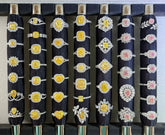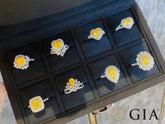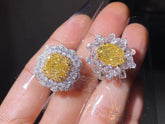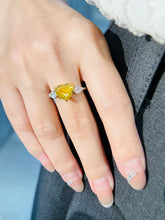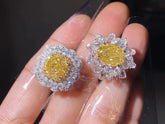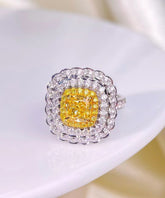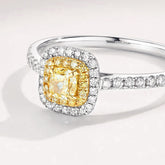The contribution of lab-grown diamonds to the incremental growth in the retail market.
Introduction: Understanding the Market Dynamics
In the current international discourse, the notion of 'lab-grown diamonds eroding the natural diamond market' is quite popular. This perspective is driven by various factors, including concerns about declining demand for natural diamonds, maintaining vested interests, and human reliance on the concepts of 'natural' and 'rare.'
The Perspective of Industry Experts
However, many industry professionals believe that the real significance of lab-grown diamonds lies in providing a new choice for the diamond consumer market, thereby helping to expand the overall diamond market. Especially when the price difference between lab-grown and natural diamonds becomes significant, consumers with diamond desires but limited budgets can afford the products they like.
Regarding the erosion of the natural diamond market, it is considered inevitable, especially in the current early development stage.
Paul Zimnisky's Insights on Market Growth

▲ Paul Zimnisky
Renowned Analyst's Observations
Renowned analyst Paul Zimnisky recently published an interesting article analyzing and predicting the contribution of lab-grown diamonds to market growth.
As a seasoned analyst with extensive experience in observing the international diamond industry, Zimnisky's viewpoints are rooted in the operating rules and developmental history of the natural diamond industry. Despite being an analyst, his objectivity and inclusiveness stand out compared to other analysts or institutions.
Predictions for 2026: A Shift in Market Competition
Zimnisky predicts that by 2026, 60% of lab-grown diamonds will 'compete with natural diamonds in the market.' In other words, he believes that 40% of lab-grown diamonds sold in 2026 will contribute to market growth.
The prerequisite for this prediction is that the diamond market is not a 'zero-sum game.' Each sale of a lab-grown diamond does not necessarily mean one less sale of a natural diamond.
The Incremental Contribution of Lab-Grown Diamonds

▲ Sales and Incremental Contribution of Lab-Grown Diamonds from 2016 to 2026. Unit: Billion USD. Image Source: Paul Zimnisky
From the chart, it can be seen that Zimnisky anticipates the global retail sales of lab-grown diamond jewelry to reach $18 billion by 2024, with $7 billion attributed to the 'incremental market.'
From 2016 to 2026, the contribution of lab-grown diamonds to the incremental market is continuously expanding.
Zimnisky insists that consumers have different perceptions of natural diamond jewelry and lab-grown diamond jewelry. Especially when the price of lab-grown diamonds continuously decreases, the conceptual differences become more apparent when consumers realize that the price of a lab-grown diamond is 30% or 20% of an equivalent natural diamond.
The Role of Technology in the Lab-Grown Diamond Industry
In addition to market philosophy changes caused by price trends, the rapid evolution of technology is also a crucial factor that the lab-grown diamond industry needs to focus on.
The article suggests that leading manufacturers will continue to increase investment in research and development to generate superior economic effects, including advancements in industrial applications. Simultaneously, this will create barriers for new entrants, providing more pricing power to established industry leaders.
Interestingly, Zimnisky uses the example of Chinese abrasive and grinding tool manufacturers, stating that 'a few large factories supply 80%-90% of the global products,' to support the perspective on 'pricing power.
Consumer Market Trends and Preferences
Back to the consumer market.
The diversity of fashion jewelry might be more suitable for the future development of lab-grown diamonds. In some areas where natural diamonds cannot meet the demand, such as specific colors or shapes, lab-grown diamonds will play a more significant role.
'Compared to imitations like Moissanite or Cubic Zirconia, lab-grown diamonds will gain a larger market share.'
'From a volume perspective (rather than sales value), lab-grown diamonds, as a synthetic product, will have a broader coverage in terms of supply and sales than natural diamonds.'(more widely supplied and sold than natural diamonds on a volume basis)
According to Zimnisky's estimation, the current global market share of lab-grown diamonds in terms of market value is only around 20%. For an industry with production doubling every two years, this is not particularly optimistic data.
'Perhaps one reason is that the current market for lab-grown diamonds is still primarily centered in the United States, and other countries and regions have not been fully developed.'
Zimnisky suggests that the slow market development of lab-grown diamonds outside the United States may be a reason. The market has not been fully developed in other countries and regions.

▲ Image Source: X
Conclusion: Coexistence and Complementarity in the Diamond Industry
In general, Zimnisky's article tends to favor the 'coexistence and complementarity of both types of diamonds,' representing a relatively moderate viewpoint.
However, this does not mean everyone agrees with him. For instance, on Twitter (referred to as 'X' in the above image), some users question: 'Why do you say lab-grown diamonds won't further consume the market share of natural diamonds? We have already seen this phenomenon in the mid to low-end market in the United States. Do you have any contrasting data?'
Zimnisky's response is: 'There are still many consumers who prefer to buy natural gemstones... Also, please note that the numbers I mentioned are values (not volumes).'
The world is vast, with many people, each entitled to their own opinions and the freedom to express them. In our daily influx of information, many still insist that 'lab-grown diamonds are fake diamonds,' and many still believe that 'one must devour the other to survive.'
In the business world, there isn't much sentimentality; it's more about the desire for money and power, coupled with the fear of losing them. Especially the latter can make people lose what is called rationality and inclusiveness.
Embracing Growth and Reducing Conflicts
However, no matter what, we still adhere to the idea of reducing conflicts and fostering harmonious development between the two factions. Moreover, the positive impact of lab-grown diamonds on the global diamond retail market increment is indeed evident, which is a positive development for the diamond industry.
People will witness, 'the entire pie is growing.'
Abstract
In the current international discourse, the notion of "lab-grown diamonds eroding the natural diamond market" is quite popular. While this perspective is driven by concerns about declining demand for natural diamonds and reliance on the concepts of "natural" and "rare," many industry professionals believe the real significance of lab-grown diamonds lies in providing new choices for consumers, thereby helping to expand the overall diamond market. Renowned analyst Paul Zimnisky predicts that by 2026, 60% of lab-grown diamonds will compete with natural diamonds in the market.
Zimnisky points out that the market share of lab-grown diamonds is continuously growing, with global retail sales projected to reach $18 billion by 2024, $7 billion of which will come from the "incremental market." He emphasizes that consumer perceptions of natural and lab-grown diamonds differ, especially as prices continue to decrease significantly.
Moreover, the rapid evolution of technology is a crucial factor that the lab-grown diamond industry needs to focus on. In the future, lab-grown diamonds may find greater potential in the fashion jewelry market due to their diversity.
